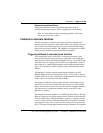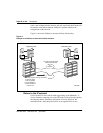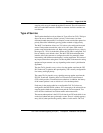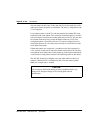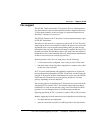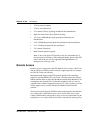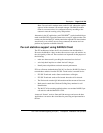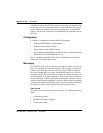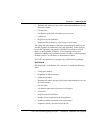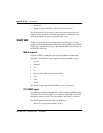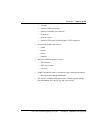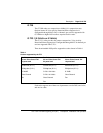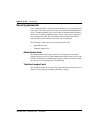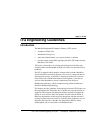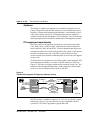
Description Page 65 of
378
ITG Trunk 2.0 ISDN Signaling Link (ISL) Description, Installation and Operation
• Destination IP address and port (of the actual card handling the call, not
the remote Leader),
• Call start time,
• Call duration (time from call initiation to call answer),
• Codec used,
• Orig/Term call side indication,
• Snapshot of remote Gateway’s QoS at time of call connect.
The calling and called numbers (with their corresponding IP addresses) are
just that, regardless of which end is doing the originating. So the Follower
card on the originating side generates a RADIUS record with its own IP
address as the originating IP address. The terminating Follower also
generates a RADIUS record with that far end’s IP address as the originating
IP address and it’s own IP address as the destination address.
If the call is not answered or is rejected, only an End record is generated.
End Record
The End record is sent when the call is released. It contains the following
fields:
• Calling party number,
• Originating IP address and port,
• Called party number,
• Destination IP address and port (of the actual card handling the call, not
the remote Leader),
• Call start time,
• Call duration (time from call answer to call release),
• Codec used,
• Orig/Term call side indication,
• Number of bytes transferred (sent octets/packets)
• Number of packets transferred (sent octets/packets)
• Snapshot of latency seen at the end of the call



